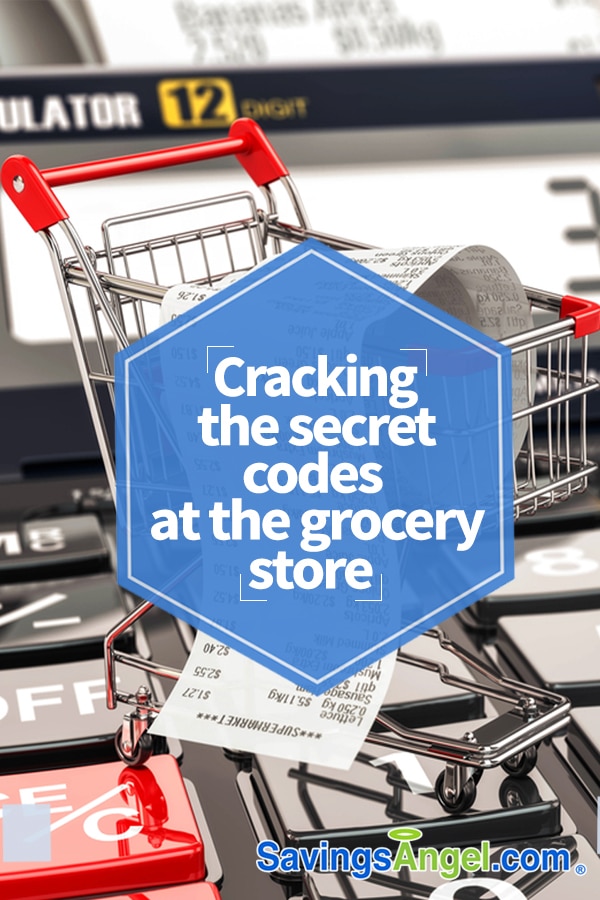 Ever wonder why there are so many colors of bread ties? Or how you might be able to tell if fruit is organically grown? What about seeing the price of an item on clearance and wondering if it will get marked down any further? I’ve got you on all these – let’s get cracking secret codes on prices and packaging.
Ever wonder why there are so many colors of bread ties? Or how you might be able to tell if fruit is organically grown? What about seeing the price of an item on clearance and wondering if it will get marked down any further? I’ve got you on all these – let’s get cracking secret codes on prices and packaging.
Cracking secret codes of bread
Bread freshness color coding
Whether it’s a twist tie or a little square clip, it’s true that the freshness of bread can be determined by the color of the bread bag’s tie. Most bread manufacturers use a standard color-coding system – not for themselves – but to help stores quickly clear shelves of older bread. First, it’s important to know that bread isn’t delivered to stores every day of the week. The standard is five days a week: Mondays, Tuesdays, Thursdays, Fridays and Saturdays. And each of those days have a coordinating color. Fortunately, both for store employees and consumers, the order of the colors is alphabetical, to make them easier to remember. Mondays = Blue; Tuesdays = Green; Thursdays = Red; Fridays = White; Saturdays = Yellow. So the next time you’re shopping for bread, note what day of the week it is and look for the color closest to that day of the week. A note: Regardless of what day of the week it is, you shouldn’t see more than 1-2 colors of any particular variety on the shelf at the same time. Using this method, stores are pretty good at keeping the bread aisle up to date to ensure freshness.
Cracking secret codes of produce
Produce growing methodology number coding
When you’re shopping for the best fruits and vegetables for your family, you might be interested in making sure that your fruits and vegetables are grown organically. Fortunately, you can get this information directly from the PLU – the number code for paying for your produce at the register. All you need to do is crack the code on the produce sticker. If the PLU number is only 4 digits, the fruit or vegetable was conventionally grown – that is, with the use of pesticides, fungicides, or chemical fertilizers. But, if the PLU number is 5 digits long, that means the produce was organically grown. However, you may also want to pay attention to the first number of that 5 digit code – if the first number is an 8, the produce is organically grown, but from genetically engineered or genetically modified (GE or GMO) seeds; if the first number is a 9, the produce is organically grown, but it probably wasn’t grown using any genetically altered or engineered seeds. Unfortunately, this labeling isn’t fail-proof, as some organically grown produce raised from GE or GMO seeds will still be labeled simply beginning with the digit 9, to indicate that is was grown organically.
Cracking secret codes of clearance pricing
Clearance price last-digit coding
Every bargain-loving consumer has pondered a purchase at the clearance rack and wondered… should I wait a few more days? Will the price go any lower? Well, obviously I always want people to get the best deals possible. And waiting does always have the inherent risk that the item will be gone altogether. However, for some stores, you might be able to get a small clue from two sources: the clearance rack sign, and the price tag itself.
First, the easy first tell – the clearance rack sign. Most people know that if the clearance is only 30% or even 40%, further markdowns are probably planned. After all, that amount off isn’t that much better than a good sale. But you can also take your code cracking to a higher level at some retailers. Although it’s not a hard and fast rule that the items will or will not be marked down further, employing some simple detective work should help you make a good guess.
Here’s how…
Take a look at the last digit in the price of several regularly priced items.
You should see the same number again and again. For example, you see a price of $6.97, so your last digit is a 7. All the other regularly priced items should end in a 7 as well. (Note: If you see a 0 as the last digit on full-price items, think of it as high, like “10”). Now you know the standard number used to indicate full-price items. Compare that to the last digit of the item you’re interested in. For example, an item that was $15.00 might now be $8.99. The further away from the original last digit, the least likely to be marked down more – the closer, it might go down further. So in this example, it may go down to something like $6.97. You’ll need to decide if you want to take your chances to see if it goes down further.
Finally, if you see the number codes in reverse, as in the last digit is actually lower on regularly priced items, simply use the technique in reverse.


